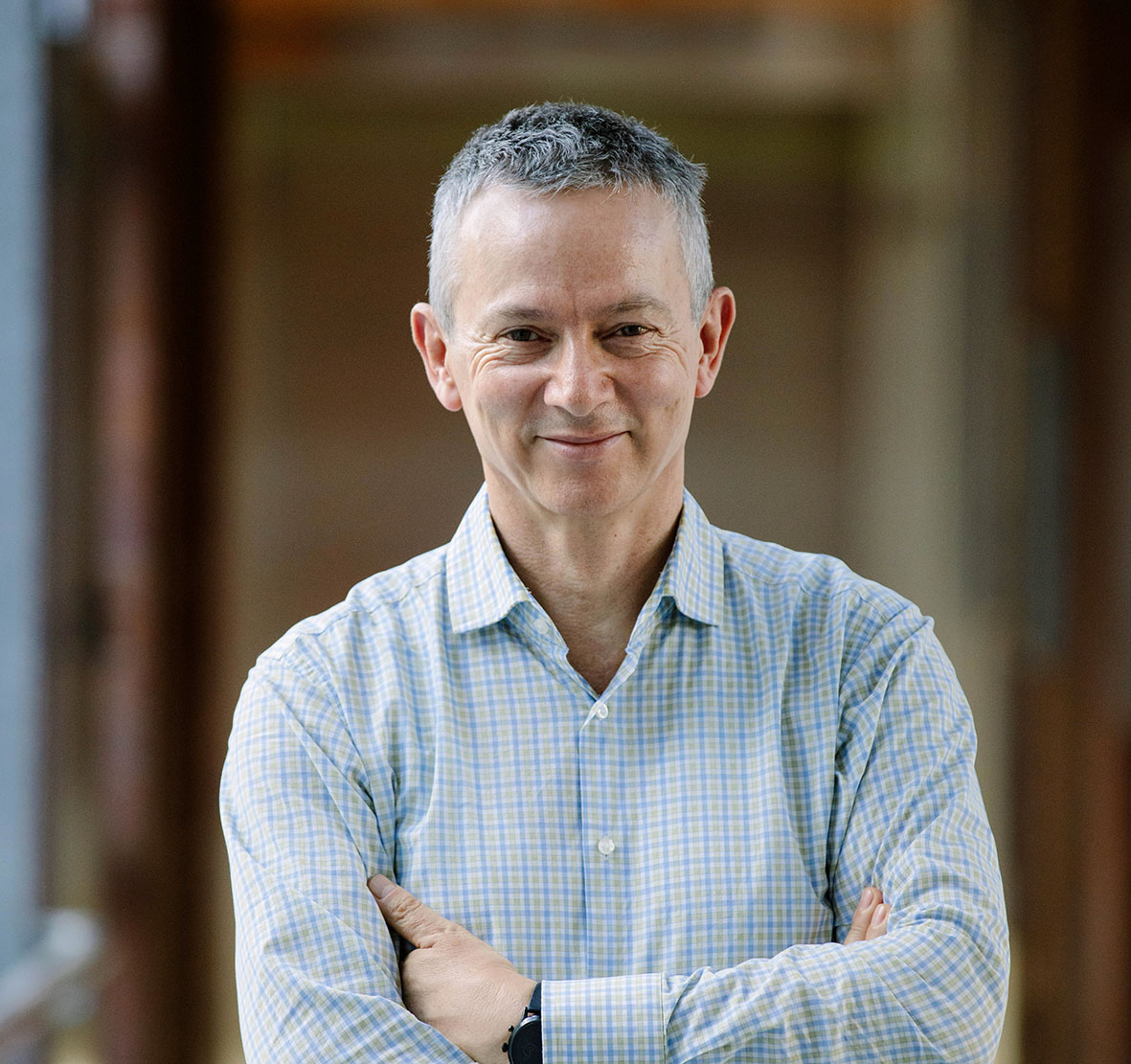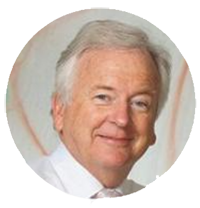A decade older, a decade bolder

When you and I are absorbed in day-to-day scientific enquiry and all it entails, it can be hard to step back and see the forest for the trees. But, at a milestone, like the tenth anniversary of the Clem Jones Centre for Ageing Dementia Research (CJCADR), we may have a reason to pause and reflect.
This presents a great opportunity for me to thank the many people who have supported us and the researchers who chose CJCADR as their research home. The fact that CJCADR was established in 2012 and still and exists and thrives today is thanks to the vision and financial support of governments, The University of Queensland, the Clem Jones Group, and the many generous donors.
A decade from when we began, filled with optimism about what lay ahead, I acknowledge the drive and tenacity of the Queensland Brain Institute’s first Director, Emeritus Professor Perry Bartlett AO, for he had many people to convince before we could get started. I also acknowledge our current QBI Director, Professor Pankaj Sah, who took up the baton for dementia research and continues to strongly advocate for us today.
In 2022, CJCADR may have less to ‘prove’, but its researchers remain just as passionate and dedicated as in the beginning. CJCADR has evolved from a handful of people to ten laboratories dedicated to dementia research. When I asked each of our research leaders to reflect on the most significant achievements of the last decade, their challenge was choosing only a few.
As I reflected on these achievements, three things stood out:
- Our dementia research has depth and breadth. From developing new single-cell techniques for studying mitochondria to using clinical knowledge to inform new diagnostic tools and therapies, we are working across many frontiers.
- Discovery research remains at our core, which is important because one never knows where the next discovery will originate or where following our curiosity will lead. When I was investigating ultrasound as a method to open the blood-brain barrier to administer drugs, I realised ultrasound had the potential to clear toxic amyloid. This discovery took my research in a completely new direction.
- We have some of the most talented people from around the world here in Queensland, advancing our knowledge of the brain and dementia. Along with their expertise and experience, each researcher has a network of colleagues and collaborators from as far afield as the United States, Europe and Korea.
I would like to sincerely thank each Group Leader for their inspiring research that contributes novel discoveries about the brain or edges us closer to the translation of research findings into improved diagnosis and treatment of dementia. I am aware that every achievement in research reflects many hours of hard work by teams.
Thank you to everyone who has been part of our journey in the first decade. While this may seem a long time in business, it’s not so long in research. We are only just beginning to see how discoveries made here at CJCADR may translate into the clinic and impact the community. So, stay with us for more discoveries and accomplishments to come.
We look forward to the next decade with a renewed sense of confidence and optimism.
Thank you,
CJCADR Director
Jürgen Götz
Our research labs
Learn more about the achievements of each of the laboratories run by our talented Research Leaders.

Associate Professor Victor Anggono and his team study receptors in neurons that help the brain to encode, store and retrieve information during learning and memory. The team has discovered the roles of regulated AMPA-type glutamate receptor turnover in the brain. They have uncovered the underlying NMDA-type glutamate receptor trafficking in neurons. In collaboration with Associate Professor Tim Bredy, the lab demonstrated the role of RNA mechanisms in neuronal plasticity, learning and memory.

Professor Gail Robinson and her team were the first to show transcranial direct current stimulation improves language fluency in healthy and pathological ageing. The team has developed new cognitive assessment tools, like the Brief Executive Language Screen, validated in stroke. The team anticipates this approach will be useful for differential dementia diagnosis. In a national large-scale multidisciplinary study, the lab found that in healthy midlife adults at high genetic risk of Alzheimer’s disease (but not yet symptomatic), executive functions and not memory correlate with brain structure.

Associate Professor Steven Zuryn and his team developed new single-cell techniques for studying mitochondria now used in many labs and world-leading biotech companies. They discovered that specific cell types are prone to accumulating mitochondrial genome (mtDNA) mutations in a manner dependent on the activity of a process called mitophagy. The team revealed new links between proteotoxicity and the quality of the mitochondrial genome in neurons, demonstrating that disease-associated proteins caused an increase in mtDNA mutations. They have uncovered a new cellular mechanism that promotes mitochondrial genome quality by switching the genome from an active to a repair state, which improves cellular function during ageing and chronic genotoxic insults.

Professor Massimo Hilliard’s laboratory is the founder of the C. elegans neuroscience community in Australia, building capacity in a new area of research. The team focuses on understanding the cellular and molecular mechanisms of neuronal degeneration and repair, using the nematode C.elegans as a model system. They discovered that C.elegans’ neurons can spontaneously repair their axon following injury and identified the molecular machinery necessary to mediate this repair. The lab revealed additional regulatory elements of axonal fusion and its effectiveness as a way to recover neuronal function, supporting the idea that this may provide a paradigm shift in how we treat nerve injuries. In axonal degeneration, the team identified an axonal protective molecule and revealed the crosstalk between the axon and its surrounding tissue and the molecular machinery involved.

Professor Peter Nestor established Queensland’s first dedicated cognitive neurology clinic. In the laboratory, his team has revealed that the landscape of degeneration in early-stage Alzheimer’s disease, in which memory impairment predominates, is a true network degeneration where each node in the network is associated with human amnesia. They went on to show that hippocampal degeneration in isolation is unlikely to explain the memory deficit. The team is developing novel approaches to brain imaging and data-driven explanations for clinical presentations of the primary progressive aphasias so that clinicians can make more accurate diagnoses.

Professor Jürgen Götz and his team has continued its successful basic research program in Alzheimer’s disease, focusing on two key players, Aβ and Tau. They revealed a role for Fyn in the de novo protein synthesis of Tau, gathering additional insights using super-resolution microscopy and other technologies and later identifying changes in the de novo proteome during memory formation. The lab developed several anti-Tau antibodies and provided evidence for the suitability of some of these in the clinic. In the translational space, the team is investigating the use of low-intensity therapeutic ultrasound in a scanning mode as a potential treatment for Alzheimer’s disease. They have ethics approval for a first-in-human safety trial.

Professor Fred Meunier and his team study how the brain's lipid landscape of neurons and immune cells is intimately implicated in neuronal degeneration. They were the first to demonstrate the lipid kinase PI3Kdelta controls the transport and secretion of the pro-inflammatory cytokine TNFa. More recently, they discovered a critical role for saturated free fatty acids during memory acquisition, opening a new area of research for understanding synaptic plasticity, learning and memory. The lab is one of the pioneers in establishing super-resolution microscopy in Australia. They were the first to hypothesise and demonstrate that mutations in key molecules involved in neuronal degeneration can alter the nanoscale organisation of the synapse.

Professor Emeritus Perry Bartlett AO and his team are investigating how exercise can ameliorate age-associated cognitive decline. Following trials in aged mice, the team conducted one of the most comprehensive and data-rich human exercise trials to date, aimed at determining the optimal exercise intensity and duration required to improve cognitive function in aged individuals. The Bartlett lab collaborates with the Meunier and Zuryn groups in the CJCADR Flagship project: Metabolic and mitochondrial DNA alterations in ageing and dementia. This project aims to identify key neural components required for successful ageing, such as changes in free fatty acid content and lower mitochondrial DNA mutations.

Professor Lizzie Coulson and her team study the cellular mechanisms causing neuropathological changes in Alzheimer’s disease. They discovered the role of the neural cell death receptor (p75) in the function and dysfunction of particular nerve cells that control attention and learning and degenerate in Alzheimer’s. Following studies in mice, the team has studied older people with and without Alzheimer’s, developing new medical imaging (MRI and PET) methods. They have discovered how p75 is activated and how to block the neurotoxic functions of p75 to treat neurodegenerative diseases. The teams are conducting further tests in cellular and mouse models of dementia and sleep apnoea, aiming for clinical trials with people in the near future.

Dr Zhitao Hu and his team study the molecular and cellular mechanisms that regulate neurotransmitter release, which drives neuronal communication in the nervous system. They use the nematode C. elegans as a model. Combining highly interdisciplinary approaches, including genetics, electrophysiology, in vivo imaging, CRISPR, behaviour, and electron microscopy, the team has demonstrated how C. elegans systems regulate neurotransmitter release. They have shown that unc-13, one of the most important synaptic proteins in synaptic transmission, has various mechanisms controlling the probability of neurotransmitter release. The team has identified novel factors that regulate the alignment of presynaptic and postsynaptic terminals.

